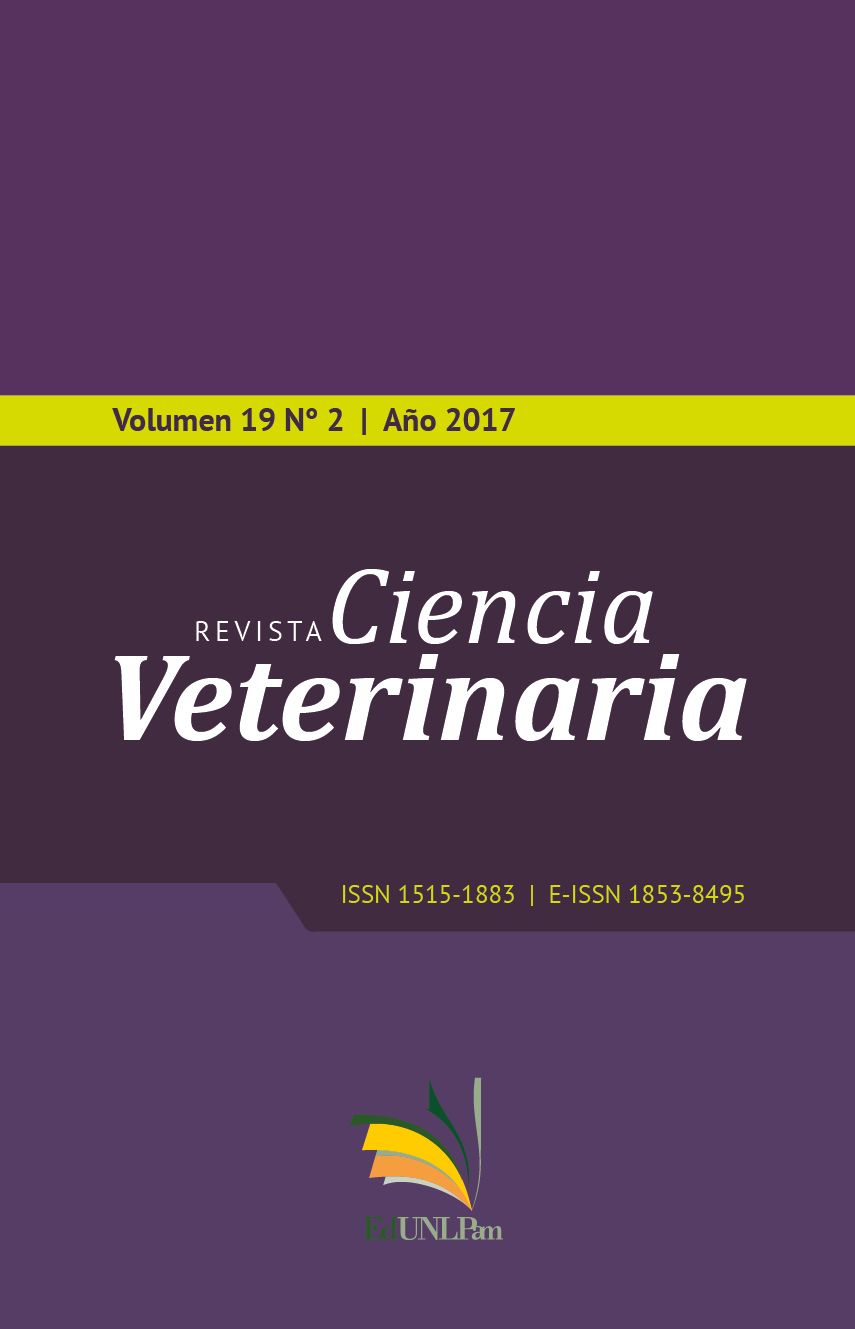Seasonal variation of the scrotal circumference of Creole goats’ males in the South of Mendoza
Keywords:
Criollo goats, , male, scrotal circumference, seasonal variationAbstract
The objective of the present study was to evaluate the variation of scrotal circumference of Criollo goats males selected within the Castron Plan at the beginning and end of the service
period, in the South of Mendoza. 692 Criollo males were used, divided according to age by dental chronology. Scrotal circumference was measured with a flexible metal centimeter, 50 cm in total length, graduated in millimeters, in May (Southern Hemisphere autumn), at the beginning of the reproductive stage and in September (Southern Hemisphere spring), at the end of the service time. The experimental design responded to a completely randomized model, evaluating measures and standard desviations by Tukey test applying the statistical program InfoStat 2.0. The results showed values of 25, 46±1, 74 and 23, 54±2, 17 cm for males of 2 teeth, in autumn and September, respectively; 28, 15±1, 38 and 27, 03±2, 51cm for males of 4 teeth, 29, 41±1, 62 and 27, 64±2, 49 cm for males of 6 teeth and 29, 47±2, 04 and 28, 63±2, 21 cm for the full mouth male. There is a significant statistical difference (p≤0. 05) between the two evaluated periods for 2, 4 and 6 teeth males. This work concluded that the scrotal circumference of the selected Criollo goats in Plan Castron show a significant seasonal variation between the onset of the reproductive season (Southern Hemisphere autumn) and end of service (Southern Hemisphere spring), with values of that parameter at the time of service that can qualify them as satisfactory male goats
Downloads
Downloads
Published
How to Cite
Issue
Section
License
Al momento de enviar sus contribuciones, los colaboradores deberán declarar , de manera fehaciente, que poseen el permiso del archivo o repositorio donde se obtuvieron los documentos que se anexan al trabajo, cualquiera sea su formato (manuscritos inéditos, imágenes, archivos audiovisuales, etc.), permiso que los autoriza a publicarlos y reproducirlos, liberando a la revista y sus editores de toda responsabilidad o reclamo de terceros , los autores deben adherir a la licencia Creative Commons denominada “Atribución - No Comercial CC BY-NC-SA”, mediante la cual el autor permite copiar, reproducir, distribuir, comunicar públicamente la obra y generar obras derivadas, siempre y cuando se cite y reconozca al autor original. No se permite, sin embargo, utilizar la obra con fines comerciales.




.jpg)

4.png)


7.png)



